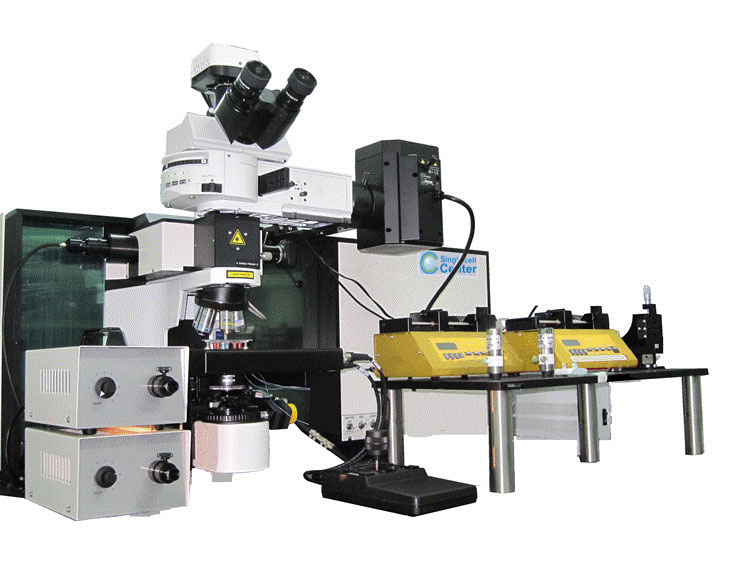The first Raman-Activated Cell Sorter (RACS) model instrument, called RACS-1, has been approved by the Ministry of Science and Technology of China (MoST) and now in full operation in Qingdao, China.
This scientific instrument development project “Application of Raman Tweezers in high-throughput live single-cell sorting” was funded by the MoST Innovation in Methodology Program and was jointly undertaken by QIBEBT and Beijing Wellsens Biotech Company (Wellsens).
RACS-1 consists of laser generator, Raman spectrometer, fluorescence microscope, microfluidics devices and automatic control system. It is the first scientific instrument that have achieved automatic or manual sorting based on the Raman fingerprint of a single microbial cell. The key parameters of RACS-1 include: fast acquisition (1-100 ms) of Raman spectrum for a single microbial cell, fast identification of cell species and status by Raman spectrum, identification of uncultured bacteria by Raman-FISH; manipulation of single-cells using Raman-Tweezers, single-cell counting based on Raman spectrum, single-cell Raman spectra database, and Raman-activated Cell Ejection, etc.
RACS differs from the Fluorescence-Activated Cell Sorter (FACS, i.e. flow cytometry) in both scientific principles and core techniques. One key feature of RACS is the capability of measuring the intrinsic properties of single-cells without the need for labeling or biomarkers. Instead of depending on the fluorescence of labeled molecules, RACS measures the intrinsic chemical profile of a live cell in a non-invasive, label-free and in vivo manner, saving tedious pretreatment and cell cultivation. It is sensitive to cellular genotypes, phenotypes and physiological states. The combination of RACS with SERS (Surface enhanced Raman scattering) can even detect single molecule inside cells. With these core advantages, RACS is able to overcome three key bottlenecks in biological research, namely, the phenotypic heterogeneity of cells, uncultured microorganisms, detection of unknown cell phenotypes.

The successful development of the first RACS has enabled many novel scientific and industrial applications that include screening and characterization of oil-producing microalgae, isolation of contaminant-degrading bacteria etc. Ongoing applications of RACS also include mining of bio-resources from ocean, screening and development of bio-fuel and bio-materials feedstock, bacterial detection in food industry, pharmaceutical research, cancer cell detection and agricultural ecology.